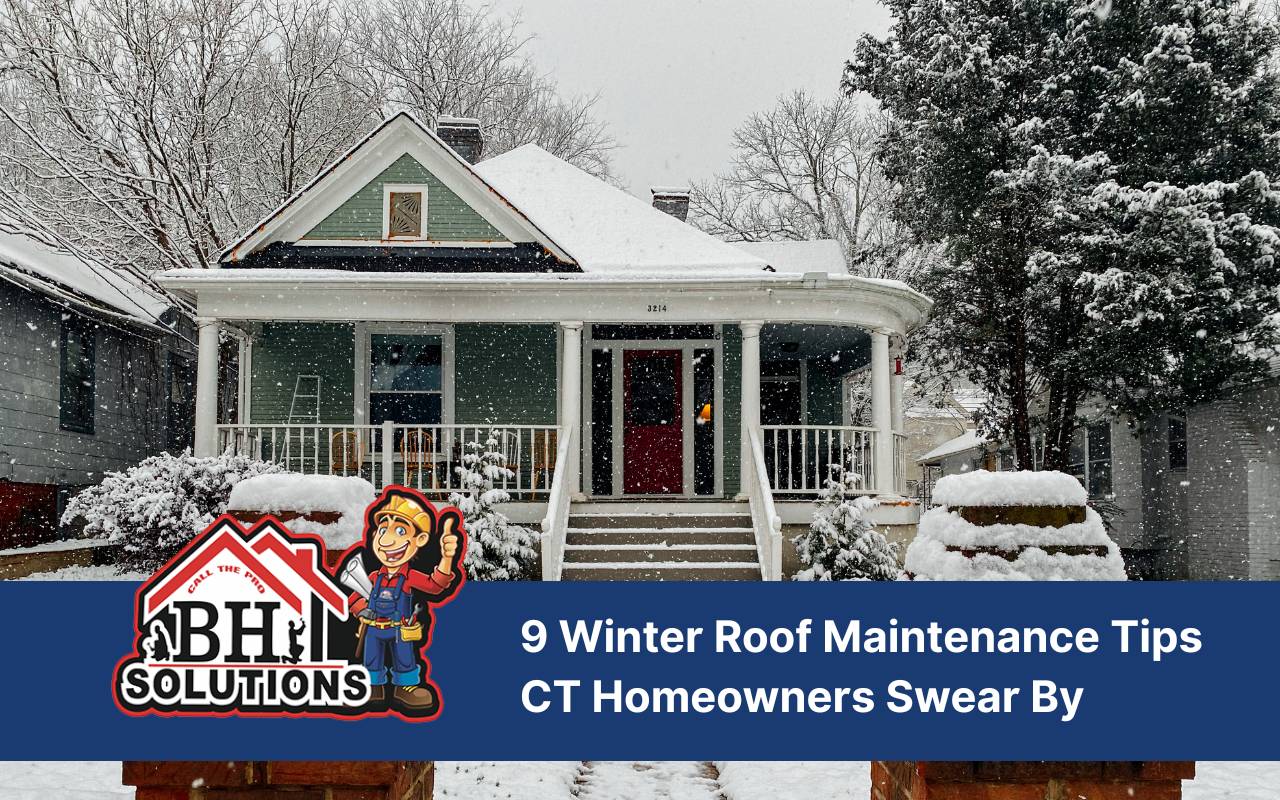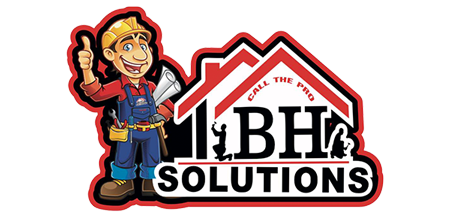
Navigate the cold months with confidence by safeguarding one of your home’s most critical defenses: the roof. As the temperatures dip in Connecticut, homeowners brace for the challenges winter brings to their doorsteps, particularly concerning their rooftops. Ice dams, heavy snowfall, and the relentless chill can pose a significant burden if left unchecked. By incorporating tried-and-true strategies and maintenance routines, you can protect your home from potential damage and costly repairs. These winter roof maintenance tips not only enhance the longevity of your roof but also ensure the safety and warmth of your household. Uncover the secrets Connecticut homeowners rely on to keep their roofs strong throughout the winter months. From ensuring proper roof ventilation to conducting a thorough roof inspection checklist, this guide provides essential insights into maintaining your home’s structural integrity. By emphasizing practical steps like gutter cleaning and attic insulation, you’ll learn how to prevent common winter woes, such as ice formation and water leaks. With these simple yet effective tactics, your roof will withstand whatever winter throws its way, allowing you to enjoy the season with peace of mind.
Importance of Winter Roof Maintenance in Connecticut
Winter in Connecticut brings a unique set of weather conditions—freezing temperatures, heavy snowfall, and ice buildup—that can challenge any homeowner’s roof. Regular winter roof maintenance tips are essential to prevent structural damage and costly repairs down the road. When snow accumulates without proper care, it can add significant weight, and when it melts and refreezes, it forms ice dams that hinder proper drainage. By staying proactive, you protect not only the shingles and underlayment but also your home’s interior from leaks and moisture.
- Schedule seasonal inspections before severe weather hits.
- Remove snow buildup after storms.
- Monitor attic temperature and moisture levels.
Beyond safeguarding your property’s physical integrity, ongoing roof maintenance fosters peace of mind during harsh weather. Rather than being caught off guard by a sudden leak or collapsing gutter, a scheduled inspection and maintenance routine help you identify weak spots before they become emergencies. For Connecticut homeowners, embracing these winter roof maintenance tips means less worry about ice dam prevention, reduced repair expenses, and a comfortable home environment all season long. For expert help, visit BH Solutions USA.
Checking and Reinforcing Roof Insulation
Proper attic insulation is one of the unsung heroes of winter roof maintenance. Without adequate insulation, heat from your home rises through the attic space and escapes through the roof, causing uneven temperatures. This heat loss can melt snow on the rooftop, which then refreezes at the eaves, leading to damaging ice dams.
- Inspect the attic floor for gaps or compressed material.
- Replace or add insulation to maintain thermal consistency.
- Ensure proper airflow to support roof ventilation.
Reinforcing attic insulation ensures your heating system works efficiently, lowers energy bills, and contributes to effective ice dam prevention by keeping roof surfaces uniformly cold.
Clearing Gutters and Downspouts Regularly
Routine gutter cleaning is critical when preparing for winter weather. Leaves, twigs, and debris can clog gutters, preventing melted snow and ice from draining properly. When water pools in blocked channels, it refreezes overnight, forming ice dams that lift shingles and force water under the roofing membrane.
- Remove visible debris from gutters and downspouts.
- Flush with water to check proper flow.
- Install gutter guards to minimize future buildup.
Performing gutter cleaning before the first snowfall each year helps protect your roof and siding from water damage and prevents the formation of ice ridges that can compromise the roof’s structure. Learn more by visiting BH Solutions USA.
Preventing Ice Dams on Your Roof
Ice dam prevention starts with a combination of attic insulation and roof ventilation. When warm air collects under the roof deck, it warms the surface and melts snow unevenly. The water then refreezes at the cooler eaves, creating a ridge of ice that traps additional meltwater, pushing it under shingles.
To combat this, maintain a cold roof deck through balanced airflow. Sealing air leaks in the attic floor reduces heat transfer, while soffit and ridge vents circulate cool air. Installing an ice and water shield along roof edges provides an extra barrier against water infiltration in case an ice dam forms. Homeowners seeking professional help can turn to BH Solutions USA for trusted solutions.
Conducting a Comprehensive Roof Inspection
Following a roof inspection checklist in early winter helps uncover vulnerabilities before extreme weather sets in. Look for cracked or missing shingles, deteriorated flashing, and sagging areas in the roof structure. Pay special attention to joints around chimneys, vents, and skylights where leaks often start.
Document your findings and compare them year over year to spot recurring issues. Taking photos during your assessment helps track wear patterns and decide when to call a professional. Proactive inspection forms the foundation of effective winter maintenance.
Ensuring Proper Roof Ventilation
Good roof ventilation pairs with attic insulation to create a stable temperature under the roof, preventing ice dam formation and reducing moisture buildup. Roof ventilation allows cold air to enter through soffit vents and exit via ridge or gable vents, balancing internal and external temperatures.
Blocked vents lead to heat pockets that thaw snow unevenly, while trapped moisture can cause rot and mildew. Inspect vents for obstructions and ensure airflow pathways remain open throughout the winter season.
Repairing Any Roof Leaks Promptly
Even a small roof leak can cause major damage if ignored, especially during winter when freeze-thaw cycles widen cracks. Addressing leaks promptly protects attic insulation and prevents mold growth inside your home.
Locate the source of leaks—often visible through stains or daylight through flashing. Apply temporary fixes like roof sealant, but for serious damage, contact a roofer. Acting fast prevents more extensive repairs later.
Installing Snow Guards for Heavy Snowfall Protection
Snow guards prevent sudden snow slides that could damage gutters or harm people below. They hold snow in place, allowing gradual melting while reducing stress on the roof.
Choose guards suited for your roofing material and install them near the eaves in staggered rows. Proper setup ensures even snow distribution and enhances roof safety during heavy winter storms. For professional installation, consult BH Solutions USA.
FAQs About Winter Roof Maintenance
How often should I inspect my roof in winter?
Inspect your roof at least twice—before and after the season. Regular checks prevent minor issues from becoming costly repairs.
What causes ice dams to form on roofs?
Ice dams form when heat escapes through the attic, melting roof snow unevenly. Proper insulation and ventilation prevent this issue.
Is DIY gutter cleaning safe during winter?
It’s safe with the right precautions. Use a sturdy ladder, wear gloves, and avoid working on icy or snowy surfaces.
Can poor attic insulation affect my roof?
Yes, poor insulation leads to heat loss, increasing energy bills and promoting ice dam formation along roof edges.
When should I call a professional for roof maintenance?
Call a professional if you notice leaks, sagging, or ice buildup. Expert inspections catch hidden damage early.
Winter Roof Maintenance for a Safe and Cozy Home
Effective maintenance combines DIY routines with professional care. By following these winter roof maintenance tips—from insulation to gutter cleaning—you protect your home’s structure and comfort. Stay proactive and explore trusted winter solutions at BH Solutions USA to ensure your roof remains durable all season long.
